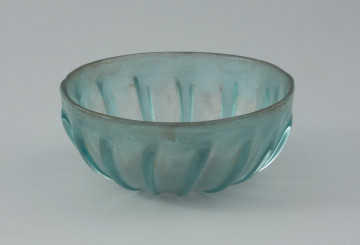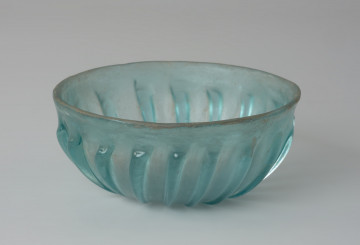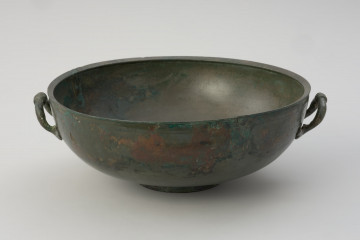
Roman teapot with ribs
National Museum in Szczecin
Part of the collection: Antiquity
Colanders and saucepans with volute handles first appeared in northern Europe in the 1st half of the 1st century and are considered to be part of the early Roman imports in the Barbaricum area. The location and circumstances under which this colander was found are unknown. It is also unclear how this object ended up in the Szczecin museum collection. Volute colanders from Western Pomerania are one of the earliest Roman imports, referred to in archaeology as the “Bohemian wave”. This name is linked to the rise of the Germanic Marcomanni state in the Bohemian Basin in the early 1st century under the command of king Maroboduus. This state was constantly threatened by the military intervention of Rome, which is why it maintained good relations with the north, i.e., with the inhabitants of the Odra and Vistula basins, Scandinavia, and the Elbe region. The Marcomanni people brought, often in the form of gifts, highly valued products of Roman workshops, especially vessels made of bronze and glass, and sometimes also some clothing ornaments, such as fibulae or belt buckles. These items are known primarily from the rich graves of the tribal aristocracy, which began to form with the beginning of the Roman period.
Bartłomiej Rogalski
Author / creator
Dimensions
cały obiekt: height: 9.2 cm, width: 28.6 mm
Object type
furnishings and equipment; equipment; kitchenware; colander
Technique
casting
Material
bronze
Creation / finding place
Owner
Muzeum Narodowe w Szczecinie
Identification number
Location / status

National Museum in Szczecin

National Museum in Szczecin

National Museum in Szczecin
DISCOVER this TOPIC
National Museum in Lublin
DISCOVER this PATH
Educational path